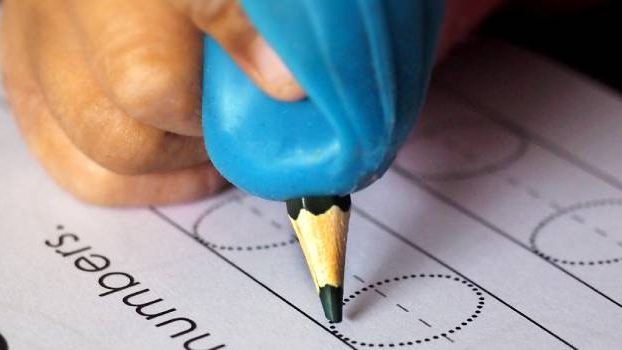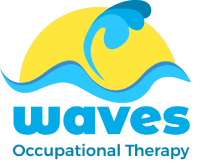Key Takeaways
- The DASH handwriting assessment measures how quickly a child can write under various conditions, helping identify issues like dysgraphia.
- Qualified professionals administer DASH to assess writing speed, posture, grip, and fine motor skills, guiding intervention plans.
- DASH results provide essential evidence for schools to arrange additional support and accommodations during tests.
- Families can implement practical strategies at home while awaiting assessments, such as improving workspace setup and using ergonomic tools.
- Waves OT combines DASH results with broader assessments to create tailored support plans that address children’s specific needs.
If your child’s handwriting is slow, messy or painful, everyday classwork can feel exhausting and exam season can feel overwhelming. The good news is that you can measure handwriting speed accurately, understand why it is hard, and put simple, practical strategies in place that make a real difference. This guide explains the Detailed Assessment of Speed of Handwriting, known as DASH, and how Waves OT uses it alongside fine motor and visual motor checks to build confident, efficient writing for school.

What is the DASH assessment for handwriting?
DASH is a standardised test that measures how quickly a pupil can handwrite in different situations. It focuses on speed, not spelling or creative ideas. The tasks include copying in your best writing, writing as fast as you can, an alphabet writing task to test memory and sequencing, and free writing where the child can choose to write about whatever they want. This mix shows how speed changes with pressure, fatigue and task type. Scores help you compare a child’s speed to other pupils of the same age and decide whether they may qualify for extra time or alternative recording methods in exams and classroom tasks.
DASH is useful when:
- Work is consistently unfinished despite good effort.
- Writing becomes smaller, messier or more painful across longer tasks.
- Teachers suspect dysgraphia, DCD, or fine motor challenges.
- You need evidence for access arrangements or for an SEN review.
Who can administer a DASH handwriting assessment?
DASH should be given and interpreted by qualified professionals trained in standardised testing and child development. Typically this includes HCPC registered occupational therapists, specialist teachers and psychologists. At Waves OT, assessments are delivered by HCPC and RCOT registered OTs who also observe posture, pencil grip, hand strength, visual motor integration and environmental factors such as desk height and seating. This wider view turns test numbers into a meaningful, practical plan.
What age is DASH for and how long does it take?
DASH is designed for pupils aged 9 years to 16 years 11 months. There is also DASH 17+ for older students. A standalone DASH session usually takes around 30 to 45 minutes, depending on the young person’s pace and need for breaks. When combined with fine motor, visual motor and postural checks, allow 60 minutes. You will get a clear explanation of results and a concise report that schools can use straight away.
How do you calculate handwriting speed and interpret scores?
During DASH, the child completes timed writing tasks. The assessor counts legible letters or words and converts raw scores into scaled scores and age normed percentiles using the test manual. These percentiles show how the child compares to typical peers.
- At or above the 16th percentile is considered average for age.
- The 6th to 15th percentile indicates moderately slow handwriting that requires monitoring, further investigation and support.
- At or below the 5th percentile indicates significantly slow handwriting that requires targeted intervention and alternative recording options, for example, extra time, typing or a scribe for longer tasks. Interpreting scores is never just about a number.
An OT will look at:
- Posture and seating. Is the chair and desk height supporting stable, pain free writing?
- Pencil grip and tool control. Is the grasp efficient or is heavy pressure causing fatigue?
- Fine motor and hand strength. Do the fingers isolate and move smoothly, or does the wrist and shoulder do the work?
- Visual motor integration. Is eye hand coordination affecting letter placement and spacing?
- Sensory and attention factors. Is noise, touch or movement sensitivity impacting pace and stamina?
The combination of percentile data and these observations guides both access arrangements and the therapy plan.
Can OT help with dysgraphia and slow writing?
Yes. Occupational therapy addresses the underlying skills that drive speed and legibility and helps you adapt the environment and task. For dysgraphia and slow writing, a typical OT plan might include:
- Posture and seating setup, including foot support, desk height, sloped board use and lighting.
- Pencil grip optimisation, trial of different pens and pencils, and pressure management strategies.
- Fine motor strengthening and dexterity, focusing on finger isolation, in hand manipulation and bilateral coordination.
- Visual motor integration practice, using graded copying, spacing tools and lined or boxed paper to organise output.
- Task strategies, for example warm ups, planning outlines, chunking, movement breaks and time awareness.
- Access to alternative recording where needed, such as typing or voice to text, with a plan to build speed gradually without pain.

How Waves OT uses DASH within a full handwriting review
At Waves OT, DASH is one key piece of the puzzle. We combine it with:
- Fine motor and hand function checks.
- Visual motor integration tasks and letter formation review.
- Posture, seating and pencil grip analysis.
- Classroom environment considerations, including noise, distractions and work presentation demands.
You receive a clear report with percentile scores, a plain English explanation, and practical actions for home and school. We outline quick wins for this term, targeted exercises, equipment recommendations, and the evidence schools need for SEN reviews, mock exam arrangements and EHCP contributions. Where relevant, we can also dovetail handwriting findings with motor coordination information, for example through Movement ABC 2, and sensory regulation strategies.
If you are in Cornwall or Devon and would like to arrange a handwriting assessment, you can book a detailed assessment such as the detailed assessment of speed of handwriting test in truro through Waves OT. Our team can also advise on related assessments when appropriate.
What DASH results can mean for access arrangements
Schools and exam boards look for objective evidence that a pupil’s writing speed is well below what is expected for age and that this difficulty is persistent and affects performance. DASH scores provide that objective speed evidence. Your OT report will:
- Present scaled scores and percentiles for each DASH subtest and the composite.
- Describe functional impact in lessons and tests, for example slow copying from the board, deterioration during a 30 minute write, or hand pain.
- Recommend appropriate access arrangements, such as extra time, rest breaks, use of a laptop, or a scribe, alongside classroom strategies like reduced copying, scaffolded worksheets and clear time prompts. Decisions are always made by the school with reference to current guidance, but having robust, standardised data and practical examples makes the process smoother.
Practical tips to try at home
While you plan or wait for an assessment, these low cost ideas can help:
- Set up the workspace. Feet flat on the floor or on a box, hips and knees at roughly ninety degrees, paper tilted to match the writing hand, and good lighting.
- Warm up before writing. Ten finger opens and closes, finger walks up and down a pencil, shoulder rolls and gentle wrist circles.
- Try different pens and grips. A soft lead pencil or gel pen with an ergonomic grip can reduce pressure and fatigue.
- Short bursts with clear goals. Use a timer for 5 to 10 minute chunks with a stretch in between. Aim for steady pace, not a sprint.
- Support spacing and layout. Use wide ruled or boxed paper, a highlighter line to guide baseline, or a simple spacing tool like a lollipop stick.
- Build strength through play. Pegboards, Lego, playdough pinches and coin flips are great for finger strength and dexterity.
If sensory regulation is part of the picture, your OT may suggest movement breaks, heavy work activities and classroom routines that keep arousal at a just right level for writing.

How results feed into school support and EHCP evidence
Your report is written for action. Schools can lift the strategies straight into support plans, teacher instructions and exam arrangements paperwork. For EHCP applications or reviews, we map findings to needs, outcomes and provision. This includes measurable targets, for example increasing legible letters per minute over a term, or achieving a specified percent of class tasks completed within time limits using agreed adaptations. If sensory or motor coordination needs are also present, we can coordinate with broader assessments so your evidence tells a consistent story.
For families and schools in Cornwall and Devon, we provide clear routes to assessment and timely reports. If you need handwriting assessments ot truro for a pupil who is struggling this term, our clinic team can help you plan the right mix of testing and observation.
When to consider a combined assessment
If writing speed is slow and coordination is also a concern, pairing DASH with a motor skills screen can highlight the root causes and set realistic expectations. Waves OT offers a paediatric ot clinic in redruth service where combined handwriting, fine motor and visual motor assessments can be completed in one visit, with a single integrated report for school.
Summary: turning numbers into confident classwork
DASH measures how quickly a pupil writes in real world tasks and gives reliable percentiles that schools understand. Interpreted by an HCPC registered OT, those numbers become a targeted plan that addresses posture, grip, fine motor control, visual motor integration and the learning environment. The outcome is practical support now, fair access to recording in lessons and exams, and clear evidence for SEN reviews or an EHCP when needed. If you would like to talk through whether DASH is right for your child, contact Waves OT to discuss options and timings and to set up an assessment that leads to confident classwork.
